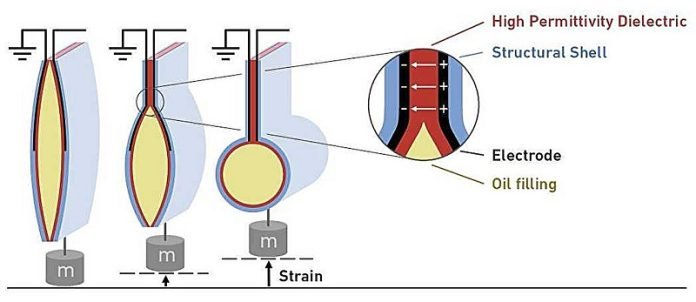
Scientists at ETH Zurich have made a groundbreaking leap in robotics, creating artificial muscles that could transform how robots move and interact with the world.
This new development is not just a technical advancement; it’s a step towards more human-like robots capable of delicate tasks, from handling fragile objects to moving with unprecedented grace.
Traditionally, robots have been rigid, powered by motors and made from hard materials. They’re great for heavy lifting and repetitive tasks but not so good at the nuanced, gentle touch needed for more delicate operations.
Imagine a robot trying to hold an egg without cracking it or moving through water as smoothly as a fish. That’s where soft robotics comes in, inspired by the very essence of human and animal movement: muscles.
ETH Zurich’s team, led by robotics professor Robert Katzschmann and including talents like Stephan-Daniel Gravert and Elia Varini, looked to nature for answers.
They asked, “Why not build robots with artificial muscles that work like our own?” This idea led to the development of something truly special – muscles that contract and lift weights, not through rigid gears, but by flexing, just like ours do.
Here’s the magic behind it: each artificial muscle is like a tiny bag filled with liquid, covered partially in electrodes.
When you apply a low electrical voltage, these electrodes pull together, pushing the liquid around and causing the bag to flex. Connect a few of these bags, and you’ve got a whole muscle ready to power a robot’s movement.
The biggest hurdle in making these artificial muscles a reality was the voltage. Previous attempts needed shockingly high voltages, making the muscles impractical for everyday use. They were bulky, unsafe around water, and not exactly user-friendly.
But the ETH Zurich team changed the game with their invention, the HALVE actuator. HALVE stands for “hydraulically amplified low-voltage electrostatic,” a fancy way of saying “we made it work with much less power.”
By using special materials that store electrical energy more efficiently and layering them with electrodes inside a durable polymer shell, they brought the voltage down from the thousands to just 900 volts. This innovation means lighter, safer, and more versatile artificial muscles.
The team has already put these muscles to the test in two robots. One is a gripper with two fingers, each powered by these new muscles, capable of delicate tasks that were previously challenging for traditional robots. The other is designed to move like a fish, showcasing the potential for soft robots in underwater exploration or tasks.
This breakthrough isn’t just about making robots softer or safer; it’s about reimagining what robots can do and where they can go.
With these new artificial muscles, robots could soon be helping in surgeries, aiding in delicate manufacturing processes, or even exploring ocean depths with the grace of a jellyfish.
The possibilities are as vast as the imagination of the scientists and engineers who dream of a world where robots are not just tools but partners in our daily lives, capable of interacting with the physical world in ways we’ve only just begun to explore.



